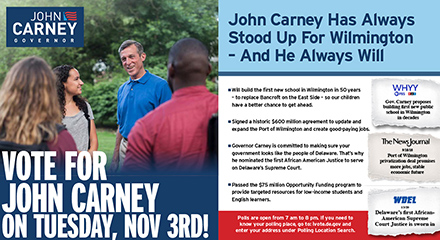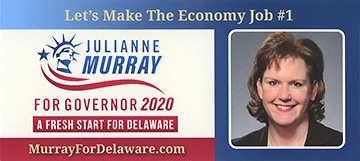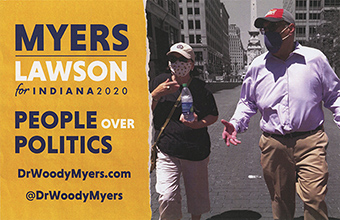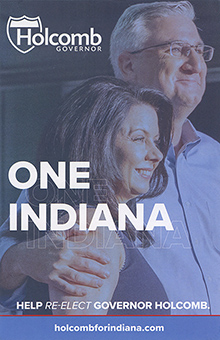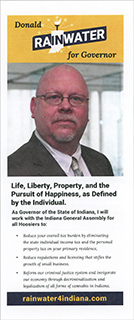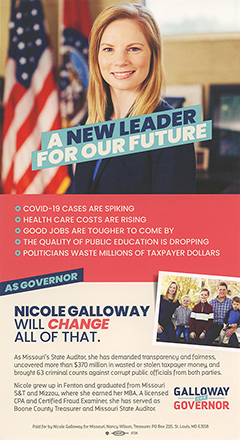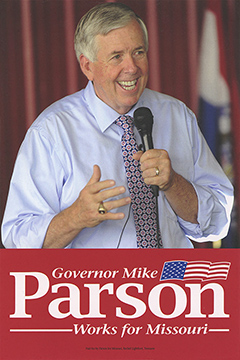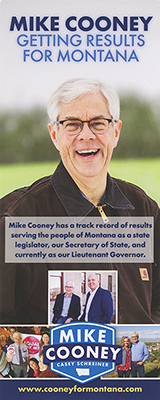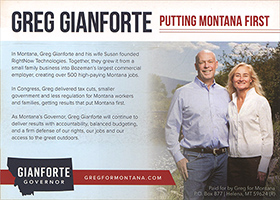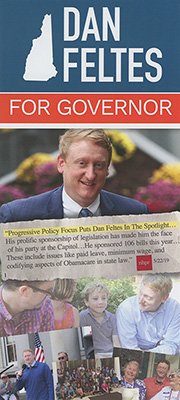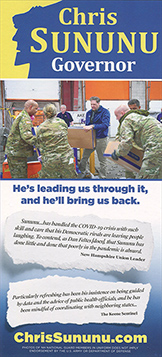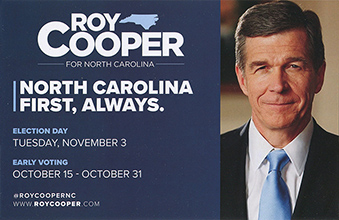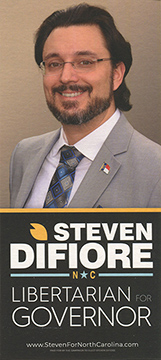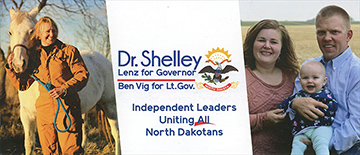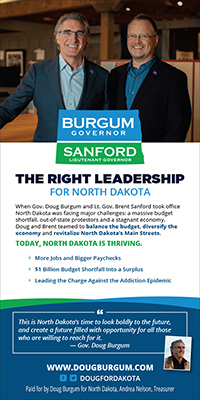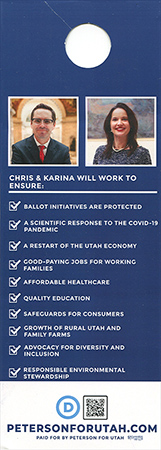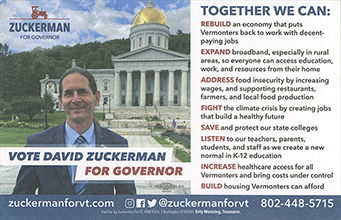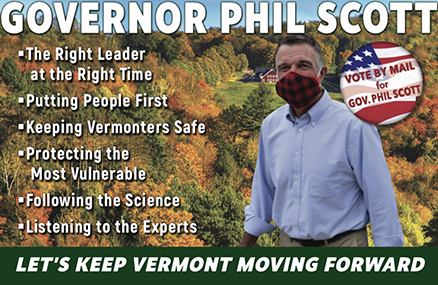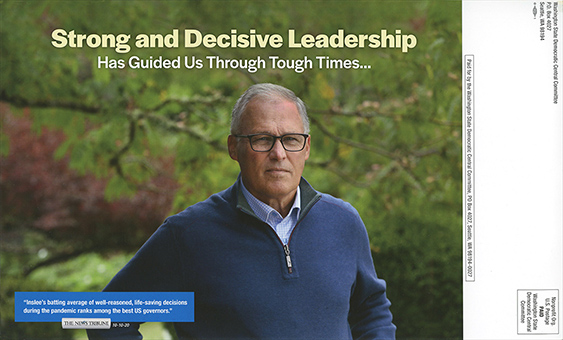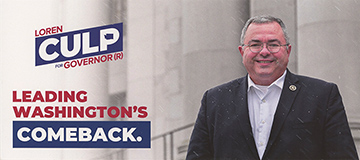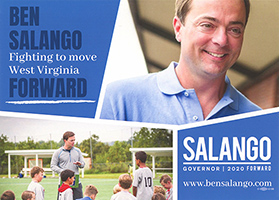- Democracy in Action « Campaign Literature Archive Main Page « 2020 Governor Races
| Nov. 3,
2020 Governor Races |
|
|
Margin of Victory in Percentage Points
| 25.01
+ |
20.01-25.0 |
15.01-20.0 |
10.01-15.0 |
5.01-10.0 |
0-5.0 |
0-5.0 |
5.01-10.0 |
10.01-15.0 |
15.01-20.0 |
20.01-25.0 |
25.01
+ |
| DE 20.83 |
WA 13.44 |
NC 4.51 |
MT 12.87* |
MO 15.70 |
IN 24.46 |
ND 30.46 NH 31.62 UT 32.63 WV 33.94 VT 41.13 |
| 2020 GOVERNOR RACE
OVERVIEW [links] The three races in 2019 (LA, KY, MS) set the stage for 2020. There were some interesting primaries. In the Fall there were a couple of competitive races and more noncompetitive races. Balance before Nov. 3, 2020: 26 Republicans, 24 Democrats. 11 seats at stake: 4 held by Democrats, 7 by Republicans. 2 retirements: 1 Democrat, 1 Republican. (Bullock-MT, Herbert-UT) 9 incumbent Governors seeking re-election/election in 2020. (Parson-MO ascended to the office, seeking election). 9 Governors re-elected in 2020. 1 seat changed party: Democrat to Republican. (MT-Bullock (D) to Gianforte (R)) 2 new Governors: 2 Republicans. (Gianforte-MT, Cox-UT) Balance after Nov. 3, 2020: 27 Republicans, 23 Democrats. |
||||||||||||
|
HIGHLIGHTS
[links/logos]
|
||||||||||||
|
see also: campaign managers _______ Basic Content
Analysis of the 2020 Gov. Intro Lit. Pieces
|
| Democratic candidates |
3,178 |
Republican candidates |
2,500 |
|
| 1. 2. 3. 4. 5. 6. 7. 8. 9. 10. 11. 12. 13. 14. 15. |
Governor Job Health State Protect Work Care Education Public Access Vote Invest School Afford First |
34 25 25 24 19 19 18 17 13 13 12 12 11 10 10 |
Governor Job State Economy Protect Lead Justice Right Work Education First Put People School Tax |
27 17 17 16 15 15 14 13 12 11 11 10 10 10 10 |
-
"Governor" "Job" "State" and "Protect" were among the top five words for candidates of both parties. The notable difference was "Health" which appeared at number 3 in the Democratic candidates' literature and "Economy" which appeared at number 4 in the Republican candidates' literature.
- The pandemic
was well represented although the word tally
doesn't show it. "Protect"—as in
"protecting lives"—was at number 5 on both
lists. Eleven of 25 pieces mentioned
the pandemic directly and there are also
various allusions to it. Also keep in
mind that some of these lit. pieces were
printed before the pandemic took hold.
DE (a) "a real leader for Delaware through this COVID-19 crisis" - b) "have taken a science-based approach to COVID-19 and focused on protecting lives" - "Before the COVID-19 crisis, Governor..." - "Before the COVID-19 crisis, Governor..." [appears twice]);Five of the 12 Republican pieces mentioned the pandemic directly:
MO ("COVID-19 cases are rising" - "protecting Missourians against COVID-19" - "instead that money will be used to respond to the COVID-19 pandemic, make...);
NC ("Slow the spread of coronavirus and protect lives");
UT ("a scientific response to the COVID-19 pandemic");
WA ("well-reasoned, life-saving decisions during the pandemic" - "performance during the coronavirus pandemic")
IN ("Coordinating data-driven statewide response to COVID-19 pandemic" - "Deployed 200 COVID-19 testing sites statewide")There are also more indirect references to the pandemic. For example:
MO ("while keeping our most vulnerable citizens safe from the virus.")
NH ("handled the COVID-19 crisis with such skill and care" - "Secured tens of millions of PPE for New Hampshire" - "Disbursed nearly $543 million for emergency financial relief to individuals, non-profits, health care providers, and businesses affected by COVID-19")
NC ("protect the elderly in nursing homes from COVID-19")
VT ("Keeping Vermonters Safe, Protecting the Most Vulnerable, Following the Science
Listening to the Experts"
"Governor Parson has worked hard to protect the health and well-being of all Missourians."
Sununu (NH) "his insistence on being guided by data and the advice of public health officials"
Forest (NC) "open and rebuild our state's economy"
_______
Debates
| DE |
IN |
MO |
MT |
NH |
NC |
ND |
UT |
VT |
WA |
WV |
| Oct.
13 Oct. 28 |
Oct.
20* Oct. 27* |
Oct. 9* | Oct.
3 Oct. 6 |
Oct.
19 Oct. 20 |
Oct. 14 | Oct. 21* | Sept.
25 Sept. 29 |
Sept.
24 Sept. 29 Oct. 1 Oct. 7 |
Oct. 7 | Oct. 13 |

